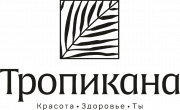PRESCRIBING INFORMATION
for the TAMERON® drug
International nonproprietary or generic or chemical name — aminodihydrophthalazinedione of sodium.
Pharmaceutical form: lyophilizate for solution for intramuscular injection.
Composition (in 1 bottle) active substance: aminodihydrophthalazinedione of sodium 100 mg.
Description: white to off-white colour packed paste. Hygroscopic.
Reconstituted solution: clear colourless or light-yellow liquid.
Therapeutic category: immunomodulatory and anti-inflammatory drug.
ATC code: L03.
Pharmacology
Pharmacodynamic properties
The drug’s mechanism of action is aligned with its capacity to influence the functional and metabolic activity of phagocytic cells (monocytes/macrophages, neutrophils, natural killers). Moreover, aminodihydrophthalazinedione of sodium normalizes antibody formation, indirectly stimulates endogenous interferon production ( IFN-α, IFN‐γ).
During inflammatory diseases, this drug reversibly inhibits for 6-8 hours gratuitous synthesis using hyperactivated macrophages of the tumour necrosis factor-alpha (TNF-α), interleukin-1, interleukin-6, and other anti-inflammatory cytokines, reactive oxygen species, which level scales inflammatory reactions degree, their rhythmicity, the severity of intoxication and the oxidative stress level. Normalizing the functional state of macrophages leads to the recovery of antigen-presenting and regulating macrophages capacities, and to the diminished auto aggression level. The drug stimulates the bactericidal capacity of neutrophilic granulocytes, enhancing phagocytosis and improving non-specific resistance of the body to infectious diseases.
Pharmacokinetics
Renal excretion is the major route of drug elimination. The elimination half-life is 30-40 minutes following intramuscular injection. Main pharmacological effects are marked within 72 hours.
Indications and usage
As an immunomodulatory and anti-inflammatory drug is used in complex therapy of immunodeficient states in adults and adolescents over 12 years:
peptic ulcer disease;
viral hepatitis;
chronic recurrent diseases caused by herpes virus infection;
diseases caused by human papillomavirus;
infectious and inflammatory diseases of the urogenital tract (urethritis of chlamydial and trichomonas origin, chlamydial prostatitis, acute and chronic salpingo-oophoritis, endometritis);
purulent inflammatory diseases of pelvic organs;
postoperative rehabilitation of patients with hysteromyoma;
postoperative complications in women of reproductive age;
postoperative purulent-septic complications and their prevention (including cancer patients);
chronic recurrent furunculosis, erysipelas;
asthenic syndrome, neurotic and somatoform disorders, performance decrement (including in sportsmen);
mental, behavioural, and post-acute-withdrawal disorders in cases of alcohol and drug abuse;
inflammatory diseases of the oral and oesophagal mucosa, periodontal diseases.
In monotherapy in adults and adolescents over 12 years:
acute and chronic infectious and inflammatory diseases of the gastrointestinal tract, accompanied with intoxication and/or diarrhoea;
chronic urogenital infections including immune rehabilitation actions during the intercurrent period with the purpose to maintain clinical remission.
As an immunomodulatory and anti-inflammatory drug is used in complex therapy of immunodeficient states in children over 6 years:
purulent surgical diseases (burn injuries, recurrent furunculosis, chronic osteomyelitis, gangrenous appendicitis with omentitis, peritonitis, purulent pleuritis);
frequent recurrent diseases of respiratory ways and ENT-organs of bacterial and viral origin (frequent ARVI, bronchitis, pneumonia, chronic tonsillitis, chronic otitis, chronic adenoiditis).
Contraindications
The idiosyncrasy; pregnancy and lactation period; children under 6 years (no data on clinical use).
Use in pregnancy and breastfeeding
The use of the drug is contraindicative during pregnancy and breastfeeding.
Routes of administration and dosage forms
Intramuscular. Before administration, the drug should be diluted in 2 ml of solution for injection or 0.9% sodium chloride solution.
Routes of administration, dosage forms, and duration of usage are prescribed by the doctor depending on diagnosis, disease severity, and patient’s age:
peptic ulcer disease in acute phase: 200 mg once a day for 2 days, then 100 mg given 72 hours apart. The treatment cycle of 15-25 injections. In chronic phase: 100 mg once a day for 5 days, then 100 mg given 72 hours apart. The treatment cycle of 20 injections.
viral hepatitis: the initial dose is 200 mg once, then 100 mg two times a day till the intoxication and inflammation symptoms ceasing. Then 100 mg given 72 hours apart. The treatment cycle of 20-25 injections.
chronic recurrent diseases caused by herpes virus infection: 100 mg per day — 5 injections, then 100 mg on alternate days (the cycle of 15 injections).
diseases caused by human papillomavirus: 100 mg once a day for 5 days, then 100 mg on alternate days — 15 injections, the treatment cycle of 20 injections.
urogenital diseases: urethritis of chlamydial and trichomonas origin, chlamydial prostatitis: 100 mg twice a day for 1 day, then 100 mg on alternate days. The treatment cycle of 10-15 injections (depending upon the pathological process severity).
salpingo-oophoritis, endometritis in acute phase: 200 mg once a day for 2 days, then 100 mg given 72 hours apart. The duration of treatment depends on the disease severity. The complete treatment cycle of 20 injections. In chronic phase — 100 mg once a day for 5 days, then 100 mg given 72 hours apart. The treatment cycle of 20 injections.
acute and chronic purulent inflammatory diseases of pelvic organs: in acute phase 200 mg once a day given as a single dose, then 100 mg once a day for 3 days, then 100 mg on alternate days — 5 injections. The treatment cycle of 10 injections. In chronic phase — 100 mg once a day for 5 days, then 100 mg given 72 hours apart. The treatment cycle of 20 injections.
postoperative rehabilitation of patients with hysteromyoma and postoperative complications in women of reproductive age: 100 mg once a day for 5 days, then 100 mg on alternate days. The treatment cycle of 15 injections.
postoperative purulent-septic complications treatment and their prevention (including cancer patients): 100 mg once a day — 5 injections before the operation, 100 mg on alternate days — 5 injections following the operation, and 100 mg given 72 hours apart — 5 injections. In case of severe disease progression, the initial dose is 200 mg given as a single one or 100 mg given twice a day. The treatment cycle of 20 injections.
chronic recurrent furunculosis, erysipelas: 100 mg once a day for 5 days, then 100 mg on alternate days. The treatment cycle of 20 injections.
asthenic syndrome, neurotic and somatoform disorders; mental, behavioral, and post-acute-withdrawal disorders in patients with alcohol and drug addiction: 100 mg once a day for 5 days, then 100 mg given as a single dose 72 hours apart. The treatment cycle of 15-20 injections. For better physical performance: 100 mg on alternate days — 5 injections, then 100 mg given 72 hours apart, the treatment cycle is up to 20 injections.
inflammatory diseases of the oral and esophageal mucosa, periodontal diseases: the initial dose is 100 mg daily — 5 injections, then 100 mg given 72 hours apart. The treatment cycle of 15 injections.
In adults and adolescents over 12 years in monotherapy:
acute and chronic infectious and inflammatory diseases of the gastrointestinal tract, accompanied with intoxication and/or diarrhoea: 200 mg given as a single dose, then 100 mg twice a day till the intoxication symptoms ceasing. It’s possible to continue the treatment cycle as follows: 100 mg given as a single dose 72 hours apart. The treatment cycle of 20-25 injections.
chronic urogenital infections including immune rehabilitation actions during the intercurrent period with the purpose to maintain clinical remission: 100 mg on alternate days in terms of the treatment cycle of 10 injections.
In children over 6 years:
purulent surgical diseases (burn injuries, recurrent furunculosis, chronic osteomyelitis, gangrenous appendicitis with omentitis, peritonitis, purulent pleuritis):
in children 6 to 11 years of age — one 50 mg injection daily for 5 days, then one 50 mg injection on alternate days during 10-15 days. The treatment cycle of 10-15 injections.
in children 12 to 18 years of age — the treatment should be provided according to the same scheme with intramuscular 100 mg injections.
for bandages, it’s recommended to use TAMERON® for cutaneous application with sterile drapes’ dressings, saturated in 1% solution of TAMERON® and water for injections (in dressings with magma or water-soluble ointment).
frequent recurrent diseases of respiratory ways, and ENT-organs of bacterial and viral origin (frequent ARVI, bronchitis, pneumonia, chronic tonsillitis, chronic otitis, chronic adenoiditis):
in children 6 to 11 years of age — one 50 mg injection daily for 5 days, then one 50 mg injection daily on alternate days during 10-15 days. The treatment cycle of 10-15 injections.
in children 12 to 18 years of age — the treatment should be provided according to the same scheme with intramuscular 100 mg injections.
Side effects
In rare cases, allergic reactions can occur.
Overdosage
There is no information about cases of overdose.
Drug interactions
In cases of concurrent administration, it’s possible to reduce the cycle dose of antibiotics. There is no indication for cases of drug incompatibilities.
Special warnings
There are no special precautions.
Effects on ability to drive and use machines
No studies on the effects on ability to drive and use machines have been conducted.
Dosage form
Lyophilizate for solution for intramuscular injection 100 mg.
One bottle of 5 ml contains 100 mg, and it is made of colourless borosilicate glass of the first hydrolytic class, sealed with a bromobutyl rubber stopper and an aluminium cap with a tear-off lid.
A unit of 5 bottles including prescribing information leaflets is packed in a carton.
Expiration date
3 years. The drug should not be used after the expiry date (EXP).
Storage
Store below 25°C, protected from light.
Keep out of reach of children!
Prescription status
It is available on prescription only.
Legal entity in whose name the marketing authorization certificate is issued
Autonomous nonprofit organization “Institute of Engineering Physics”, Russian Federation
Address: 1a Bolshoy Udarny pereulok, Serpuchov, Moscow region, 142210,Russian Federation
Producer
Autonomous nonprofit organization “Institute of Engineering Physics”, Russian Federation
Address: 1a Bolshoy Udarny pereulok, Serpuchov, Moscow region, 142210,Russian Federation
Tel.: +7 4967 35 31 93
Fax +7 4967 35 44 20
E-mail: info@iifmail.ru
Organization receiving complaints from consumers
MegaLek LLC
Address: 40 Storozhevaya street, room 3C, Moscow, 111020, Russian Federation
E-mail: pv_iif@megalek.com
Tel.:+7 495 144 81 89








